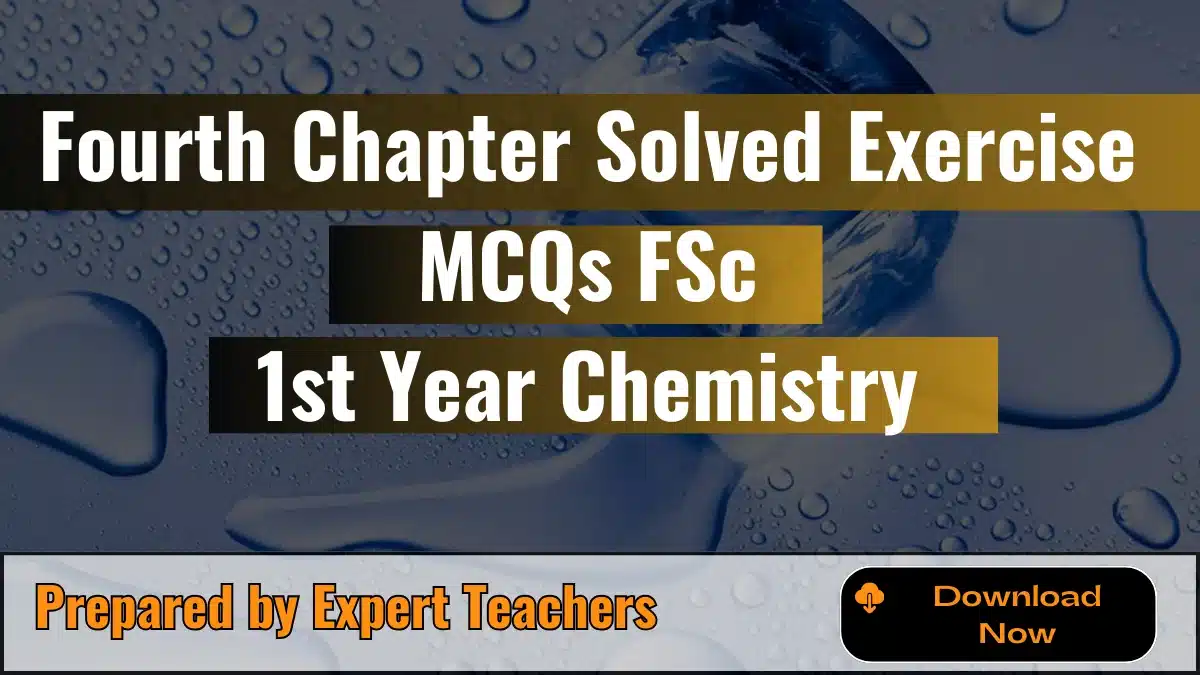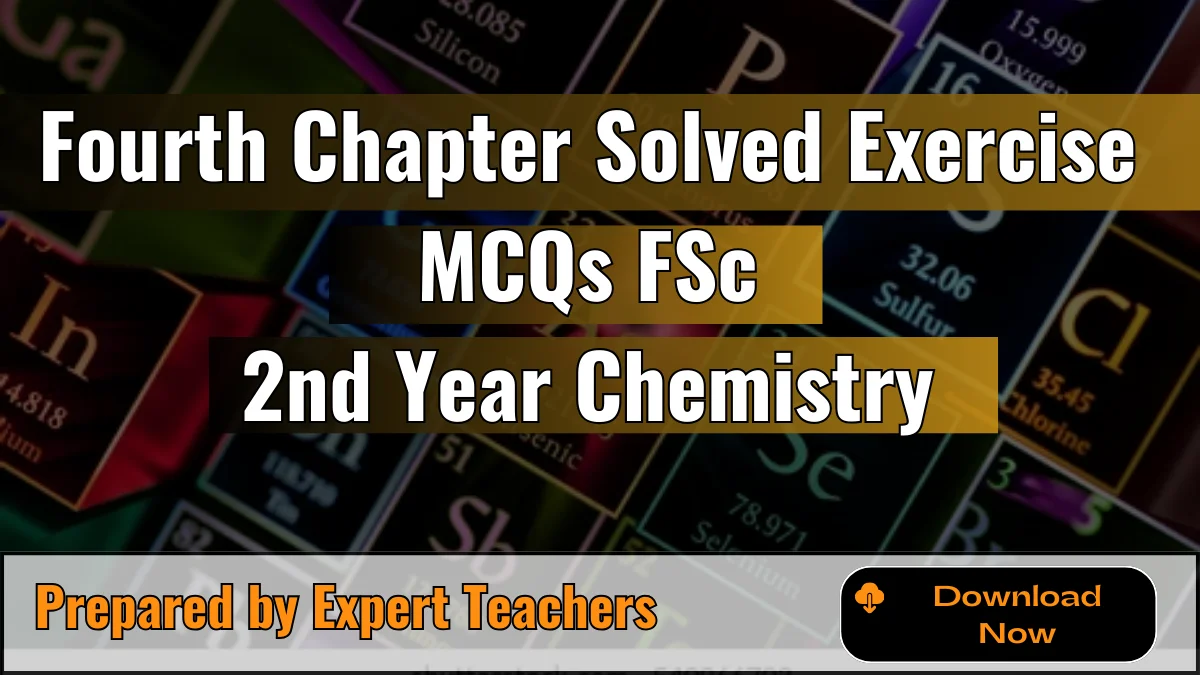Fifth Chapter Solved Exercise MCQs Of FSC Second Year Chemistry
The 5th Chapter Solved Exercise MCQs of FSC 2nd-year Chemistry provides a complete set of solved multiple-choice questions (MCQs). Each MCQ comes with a brief explanation to help you understand the correct answer. These solutions are designed to support students in preparing for their exams, making complex concepts easier to grasp and ensuring a solid foundation for success.
Fifth chapter solved MCQs with explanation
1. Which of the following hydrogen halide is the weakest acid in solution?
(a) HF
(b) HBr
(c) HI
(d) HCl
Explanation: Option (a) is correct. Because the H-F bond is very strong, making it harder for HF to dissociate in water. In comparison, the bonds in HCl, HBr, and HI are weaker and dissociate more easily, making them stronger acids.
2. Chlorine heptaoxide (Cl₂O₇) reacts with water to form:
(a) Hypochlorous acid
(b) Chloric acid
(c) Perchloric acid
(d) Chlorine and oxygen
Explanation: Option (c) is correct. Because, The reaction can be represented as:
Cl₂O₇ + H₂O → 2HClO₄
In this reaction, Cl₂O₇, which is an oxide of chlorine in its highest oxidation state (+7), reacts with water to produce perchloric acid, which contains oxygen in the +7 state.
3. Hydrogen bond is the strongest between the molecules of:
(a) HF
(b) HCl
(c) HBr
(d) HI
Explanation: Option (a) is correct. Because Hydrogen bonds are strongest when hydrogen is bonded to a highly electronegative atom like fluorine. HF has the strongest hydrogen bonds because fluorine is very electronegative and has a small atomic size, leading to a strong dipole-dipole attraction. In contrast, HCl, HBr, and HI involve less electronegative atoms, resulting in weaker hydrogen bonds.
4. Which halogen will react spontaneously with Au(s) to produce Au3+?
(a) Br2
(b) F2
(c) I2
(d) Cl2
Explanation: Option (b) is correct.
5. The anhydride of HClO4 is:
(a) CIO3
(b) ClO2
(c) Cl2O5
(d) CI2O7
Explanation: Option (d) is correct. Because When perchloric acid (HClO₄) loses water (H₂O), it forms its anhydride:
- 2HClO4 → Cl2O7 + 2H2O2
In this reaction, two molecules of perchloric acid lose two molecules of water to form one molecule of dichlorine heptaoxide (Cl₂O₇).
6. Bleaching powder may be produced by passing chlorine over:
(a) calcium carbonate
(b) hydrated calcium sulphate
(c) anhydrous calcium sulphate
(d) calcium hydroxide
(e) magnesium hydroxide
Explanation: Option (d) is correct. Because:
Ca (OH)₂ + Cl₂ → Ca (OCl)₂ + CaCl₂ + H₂O
Calcium hydroxide reacts with chlorine to form bleaching powder (calcium oxychloride), calcium chloride, and water. This method is preferred because calcium hydroxide reacts readily with chlorine to produce the desired product.
7. Which is the strongest acid?
(a) HClO
(b) HClO₂
(c) HClO₃
(d) HClO₄
Explanation: Option (d) is correct. Because Perchloric acid (HClO₄) is the strongest because it has the highest number of oxygen atoms and chlorine in its highest oxidation state (+7). This structure makes it easier to lose a proton (H⁺), resulting in the strongest acidity among the options.
8. Which halogen occurs naturally in a positive oxidation state?
(a) Fluorine
(b) Chlorine
(c) Bromine
(d) Iodine
Explanation: Option (a) is correct. Because
9. An element that has a high ionization energy and tends to be chemically inactive would most likely be:
(a) an alkali metal
(b) a transition element
(c) a noble gas
(d) a halogen
Explanation: Option (c) is correct. Because Noble gases have high ionization energies due to their full valence shells, making them chemically inactive. This stability prevents them from easily forming compounds. In contrast, alkali metals and halogens are more reactive, and transition elements vary in reactivity.
10. Which of the following represents the correct electronic configuration of the outermost energy level of an element of zero (VIIIA) group in the ground state?
(a) s²p²
(b) s²p⁴
(c) s²p⁵
(d) s²p⁶
Explanation: Option (d) is correct. Because Elements in Group VIIIA (or Group 18) of the periodic table are noble gases. In their ground state, these elements have a completely filled outermost energy level, which corresponds to the s and p orbitals being fully occupied. For these elements, the outermost energy level has 2 electrons in the s orbital and 6 electrons in the p orbitals, making a total of 8 electrons.
Therefore, the electronic configuration of the outermost energy level for a noble gas in Group VIIIA is s²p⁶.







Leave a Reply